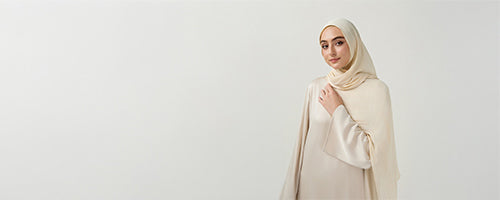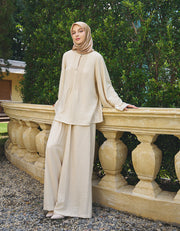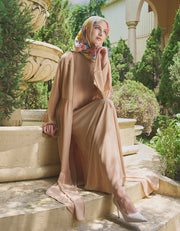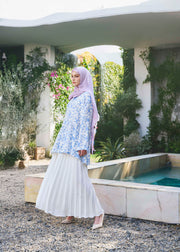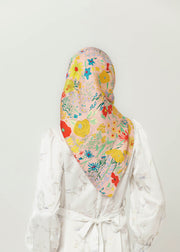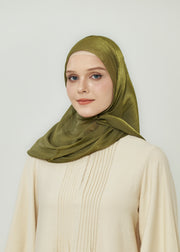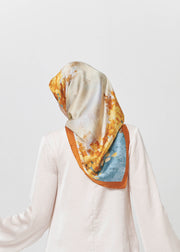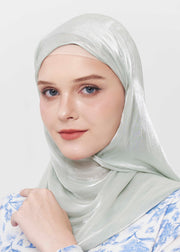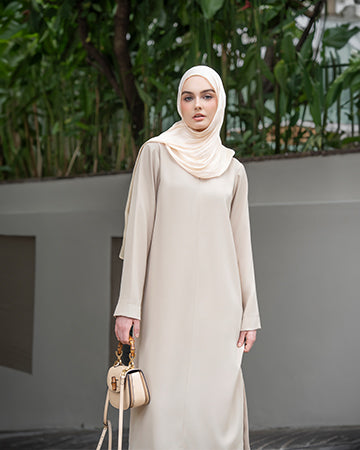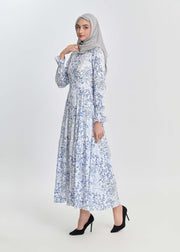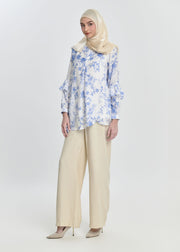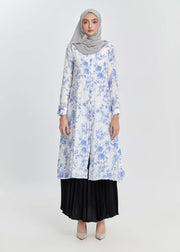The Meaning of White in Muslim Clothing
White has always held a special place in Islamic culture. From the garments worn during pilgrimage to the traditional attire seen in many Muslim communities, white in Muslim clothing is more than just a color—it carries deep spiritual, cultural, and symbolic significance. In this article, we explore what white truly represents in the context of Muslim fashion, religious practices, and modest wear.
White in Muslim Clothing: A Symbol of Purity and Peace
In Islamic thought, white often symbolizes purity, cleanliness, and spiritual sincerity.
This highlights how white is not just aesthetically pleasing, but is also recommended in religious practice.
Because of this, many Muslims choose white garments for prayer, religious events, or moments of spiritual reflection. It's common to see white hijabs, abayas, thobes, or kanduras worn for Friday prayers, Eid celebrations, or religious pilgrimages like Hajj or Umrah.
White in Muslim Clothing: A Symbol of Purity and Peace
The Role of White in Islamic Rituals
The most prominent use of white in Muslim clothing is during Hajj, the pilgrimage to Mecca. Men wear two white unstitched cloths called ihram, symbolizing equality, humility, and the shedding of worldly status.
For women, while the ihram dress code isn’t as strict, many still opt for white hijabs and dresses to reflect the same sense of purity and spiritual renewal.
Wearing white during Hajj emphasizes a return to the basics—a state where the soul stands before God without ornamentation or distraction. This explains why white remains a deeply respected color in the eyes of many Muslims.
White Clothing in Daily Modest Wear
Outside of rituals, white is also a staple in everyday modest fashion. Many Muslim women choose white pieces for their versatility, elegance, and clean aesthetic. Whether it’s a flowy white abaya, a crisp blouse paired with a long skirt, or a soft white hijab, this color offers endless possibilities for modest and stylish dressing.
White clothing pairs effortlessly with:
-
Earth tones (camel, olive, beige)
-
Deep shades (navy, maroon, emerald)
-
Pastels (blush pink, baby blue)
This makes white an excellent base or accent color in any modest wardrobe.
White Clothing in Daily Modest Wear
Why Muslim Brides Often Choose White
In many Muslim cultures, white is also the traditional color for bridal wear. While not obligatory, many Muslim brides around the world wear white dresses, hijabs, or veils on their wedding day as a symbol of:
-
New beginnings
-
Spiritual and emotional purity
-
Unity and peace
Depending on the region, some brides add colorful embroidery or metallic accents to personalize their outfit while still honoring the symbolism of white.
Why Muslim Brides Often Choose White
White in Men’s Traditional Attire
White is also dominant in men’s traditional Islamic wear, especially in the Middle East and South Asia. The white thobe (Saudi Arabia) or kandura (UAE) is often worn as a daily garment due to:
-
Its association with cleanliness and piety
-
Its ability to reflect sunlight in hot climates
-
Its status as a cultural norm for modesty and respectability
In Southeast Asia, men might wear white baju melayu for Eid prayers or religious ceremonies.
Maintaining White Clothing in a Modest Wardrobe
Despite its elegance, white can be challenging to maintain. Muslim fashion lovers who wear white regularly often pay extra attention to:
-
Fabric quality: choosing thicker or double-lined materials to avoid transparency
-
Stain protection: using layering or outer garments like open abayas or coats
-
Laundry care: separating whites and using gentle detergents to preserve brightness
The extra care is often worth it—white pieces elevate modest outfits with a sense of serenity and simplicity that few other colors can offer.
Maintaining White Clothing in a Modest Wardrobe
Conclusion: Why White Remains Central in Muslim Fashion
The enduring appeal of white in Muslim clothing lies in its spiritual symbolism, cultural significance, and visual elegance. From religious rituals like Hajj to modern-day fashion, white reflects key Islamic values: purity, humility, and peace.
Whether worn in a prayer setting or styled into a modern modest outfit, white continues to be a timeless, powerful color choice for Muslims around the world.
If you're looking to incorporate meaningful, modest, and versatile pieces into your wardrobe, explore curated collections in white and other neutral tones at Minnaba—a brand where Islamic tradition meets contemporary modest fashion.

